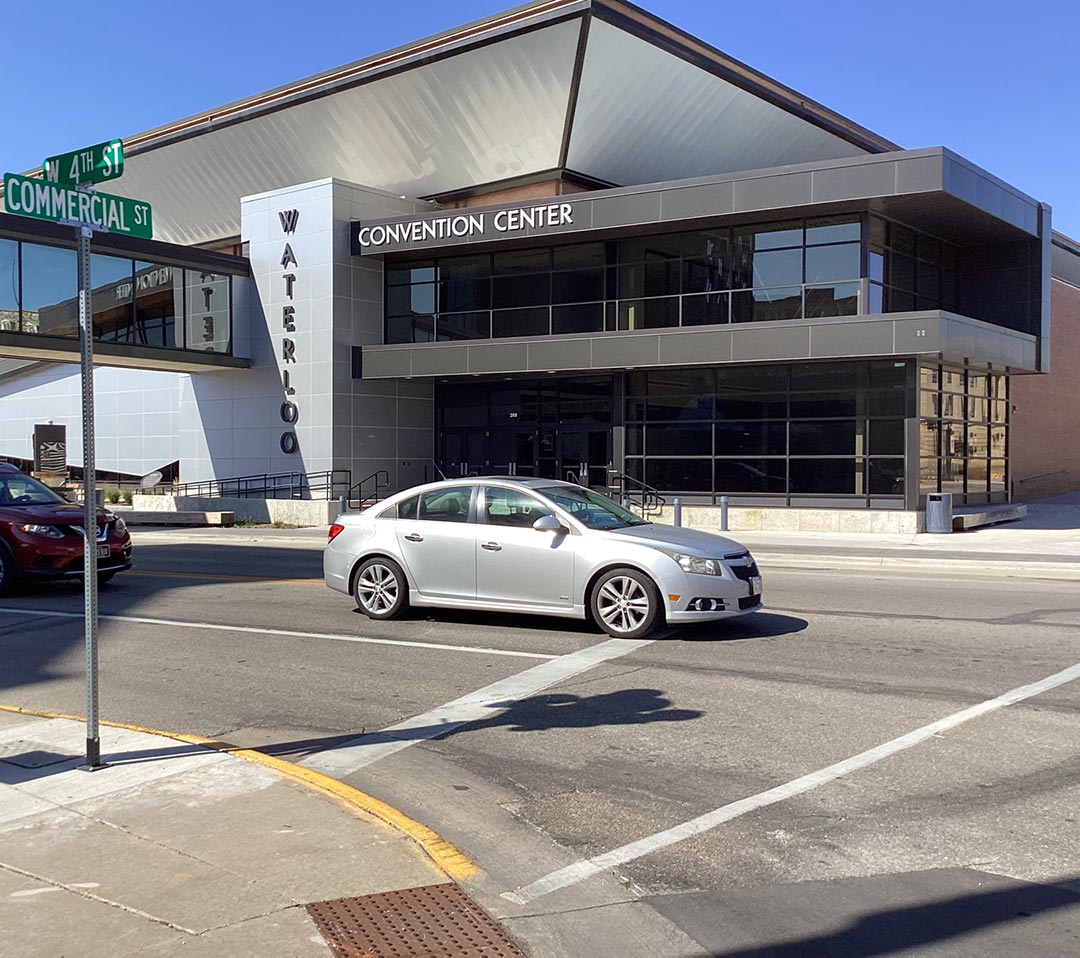The System
A concise explanation of the Council/Manager system
According to the International City/County Management Association, the council-manager form of government combines the strong political leadership of elected officials with the strong managerial experience of an appointed city manager. All power and authority to set policy rests with an elected governing body, the city council. The council, in turn, hires a nonpartisan manager who runs the organization. Since its establishment, the council-manager form has become the most popular local government structure in the United States.

How the Council/Manager System Works
The elected city council members represent their community and develop a long-range vision for its future. They establish policies that affect the overall operation of the community and are responsive to residents’ needs and wishes. To ensure that these policies are carried out and that the entire community is equitably served, the governing body hires a professional manager on the basis of his/her education, experience, skills, and abilities (and not their political allegiances). If the manager is not responsive to the governing body, it has the authority to terminate the manager at any time.
A city benefits from the council-manager form of government in many important ways:
- Political power is concentrated in the entire governing body. The mayor and council share legislative functions.
- Policymaking resides with elected officials, while oversight of the community’s day-to-day operations resides with the manager. This way, the elected officials can devote time to policy planning and development.
- The manager carries out the policies established by the elected governing body, emphasizing effective, efficient, and equitable service delivery.
- Because decisions on policy and the community’s future are made by the entire governing body rather than a single individual, council-manager governments more often engage and involve their residents in decision-making. Residents guide their community by serving on boards and commissions, participating in visioning and strategic planning, and designing community-oriented local government services.
Council/Manager Systems Are More Efficient
IBM’s study, “Smarter, Faster, Cheaper,” examined city efficiency of the top 100 cities in the U.S. Efficiency is the ability to do something well and without waste, especially regarding time, effort, materials, energy, or money. “Management appears to be the key, and the study provides some evidence. Cities with city manager forms of government are nearly 10% more efficient than cities with strong mayor forms of government. This finding appears to validate the assumption underlying city manager forms of government, notably that investing executive authority in professional management shielded from direct political interference should yield more efficiently managed cities.”
Professional Management Matters (and it matters a lot)
A direct result of increased efficiency covers the manager’s salary, which is comparable to a school superintendent’s pay. This efficiency leads to lower property taxes and fees and attracts more businesses to the city. Property values will rise, and there will be an increased sense of pride in our city.

Roles
City Council’s Role
The city council is the community’s legislative and policymaking body. Power is centralized in the elected council, which, for example, approves the budget and determines the tax rate. The council also focuses on the community’s goals, major projects and such long-term considerations as community growth, land use development, capital improvement and financing and strategic planning. The council hires a professional manager to implement the administrative responsibilities related to these goals and supervises the manager’s performance.
Mayor’s Role
In council-manager communities, depending on the set-up, the mayor is elected, as now, or may be chosen by the council from their ranks and may or may not be a voting member of the city council. The mayor presides at council meetings, represents the city in intergovernmental relationships, appoints members of citizen advisory boards and commissions (with the advice and consent of the council), assigns agenda items to committees, facilitates communication and understanding between elected and appointed officials, and assists the council in setting goals an advocating policy decisions.
City Manager’s Role
The city manager is hired to serve the council and the community and brings to the local government the benefits of his/her training and experience in administering municipal projects and programs. The manager prepares a budget for the council’s consideration; recruits, hires, terminates, and supervises government staff; serves as the council’s chief advisor; and carries out the council’s policies. Council members and residents count on the manager to provide complete and objective information about local operations, discuss the pros and cons of alternatives, and assess the long-term consequences of their decisions. The manager makes policy recommendations to the council for consideration and final judgment. The manager is bound by whatever action the council takes, and control is always in the hands of the elected representatives of the people. Appointed managers serve at the pleasure of the governing body. They can be fired by a majority of the council, consistent with local laws, or any employment agreements they may enter into with the council.
Mayor-Council-Manager Relationship
Under the council-manager form, the manager is the city’s chief administrative officer. The manager supervises and coordinates the departments, appoints and removes their directors, prepares the budget for the council’s consideration, and makes reports and recommendations to the council. All department heads report to the manager. The manager is fully responsible for municipal administration. The mayor, in a council-manager form, is the ceremonial head of the municipality, presides over council meetings, and makes appointments to boards. The mayor may be an important political figure but has little, if any, role in day-to-day municipal administration. In some council-manager cities, the office of mayor is filled by popular election; in others, by council appointment of a council member.
The council-manager form is widely viewed as taking politics out of municipal administration. The manager himself is expected to abstain from any political involvement. At the same time, the council members and other “political” leaders are expected to refrain from intruding on the manager’s role as chief executive. Of course, the manager hired and fired by the council is subject to the council’s authority. Still, council members are expected to abstain from seeking to individually interfere in administrative matters, including actions in personnel matters. Some city charters provide that interference in administrative matters by an elected city official is grounds for the removal of the elected official from office.
History of the Council/Manager System of Government
One of the critical elements in 20th-century municipal reform has been the proposition that a solid and non-political executive office should be the administrative centerpiece of municipal government. This concept was implemented in thousands of American cities in the 20th century by adopting the council-manager form of government. This form parallels the organization of the business corporation: voters (stockholders) elect the council (board of directors), including the mayor (chairman of the board), which, in turn, appoints the manager (chief administrative officer).
Unlike the mayor/council forms, which emphasize political leadership, the prevailing norms in the council-manager form are administrative competence and efficiency.
Spread of Council-Manager Plan
The council-manager plan, first used in 1908 in Staunton, Virginia, received nationwide attention 6 years later when Dayton, Ohio, became the 1st sizable city to adopt it. After that, the plan’s popularity enjoyed steady but not spectacular growth until after World War II. At that time, many municipalities were confronted with long lists of needed services and improvements that had been backlogged since the Depression years of the 1930s. Faced with such challenges, many municipalities adopted the council-manager form. The plan has been especially attractive to small and medium-sized localities. It is used in a majority of American cities with populations of 25,000 to 250,000. It has been strongly promoted since the 1920s by the National Civic League and the International City/County Management Association.
Benefits
A city benefits from the council-manager form of government in many important ways:
Studies show that professional city managers provide complete and objective information on city operations, discuss the pros and cons of alternatives, and assess the long-term consequences of the council’s decisions. Additionally, studies indicate an extra benefit: a more harmonious council.
- Political power is concentrated in the entire governing body. The mayor and council share legislative functions.
- Policymaking resides with elected officials, while oversight of the community’s day-to-day operations resides with the manager. This way, the elected officials can devote time to policy planning and development.
- The manager carries out the policies established by the elected governing body, emphasizing effective, efficient, and equitable service delivery.
- Because decisions on policy and the community’s future are made by the entire governing body rather than a single individual, council-manager governments more often engage and involve their residents in decision-making. Residents guide their community by serving on boards and commissions, participating in visioning and strategic planning, and designing community-oriented local government services.
My Benefits from the Council/Manager System
Lower Property Taxes: The system’s efficiency can lead to significant savings on property taxes and fees, easing the financial burden on citizens. Waterloo has the highest property tax in Iowa at $22.07 per thousand. The second highest is $17.85 in Council Bluffs, third highest in Davenport at $ 16.78. All three mayor/council cities
Better Decision-Making: A professional manager ensures that the council receives high-quality information, leading to more informed decisions.
Higher Citizen Satisfaction: Studies show citizens are more satisfied with their government in council/manager-run cities due to improved governance.
What is my involvement as a citizen?
Your responsibility is to educate yourself on the advantages of the city’s professional council/manager system. Once you are convinced of the system’s value, spread the word to others to visit this site, lobby the city council to educate our citizens on the system’s benefits, and call for a referendum. Believe in your ability to make a difference in the success of this venture—because you can.
Your Opinion is Important
Waterloo City Council Members

Rob Nichols
At-Large Through 12/31/2025

Steve Simon
At-Large Through 12/31/2028

John Chiles
Ward 1 Through 12/31/2025

Dave Boesen
Ward 2 through 12/31/2028

Nia Wilder
Ward 3 Through 12/31/2025

Dr. Belinda Creighton-Smith
Ward 4 Through 12/31/2028

Ray Feuss
Ward 5 Through 12/31/2025